Encounter Brazilian Iguaçu Falls
Authentic South American Experiences For Your Clients Request A Quote
Iguaçu Falls may well be the most picturesque waterfall on earth. It is the kind of place that has inspired thousands of artists who have traveled from all over the world to paint the Falls.
Unlike other great waterfalls, the majesty of Iguaçu is that the Iguaçu River drops around 328 ft (100m) into 275 separate Falls across its 0.6 mile (1km) width. There are small trickles alongside beautiful curtains of water, and the huge torrents of the Devil’s Throat pound the bottom so relentlessly that an impenetrable mist is created. Many of the Falls would be tourist attractions in their own right, but as a whole, the spectacle is as awe-inspiring as any of nature’s great sights.
The sheer scale of Iguaçu Falls means it is impossible to view every one of the Falls at once except from the air. A helicopter ride around and above the Falls is breathtaking in many ways. If you can see the Falls best from above, the best place to feel them is from below. Boat trips take you right under the powerful Falls in some places, a truly memorable trip as well as a wet one!
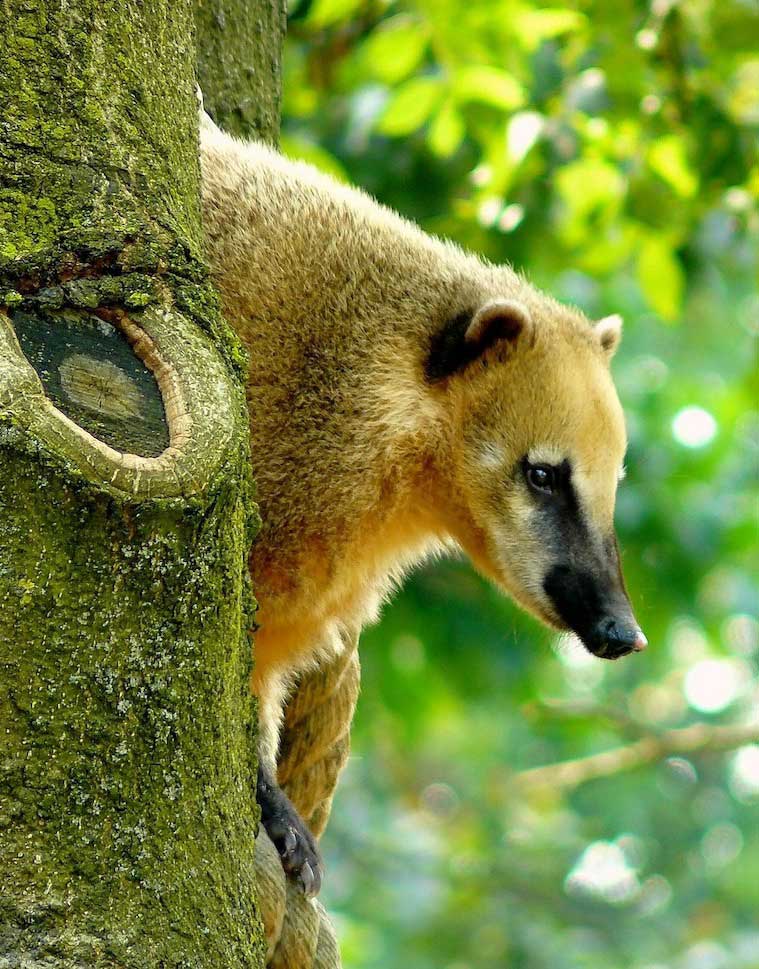
Get up close and personal with Iguazu Falls
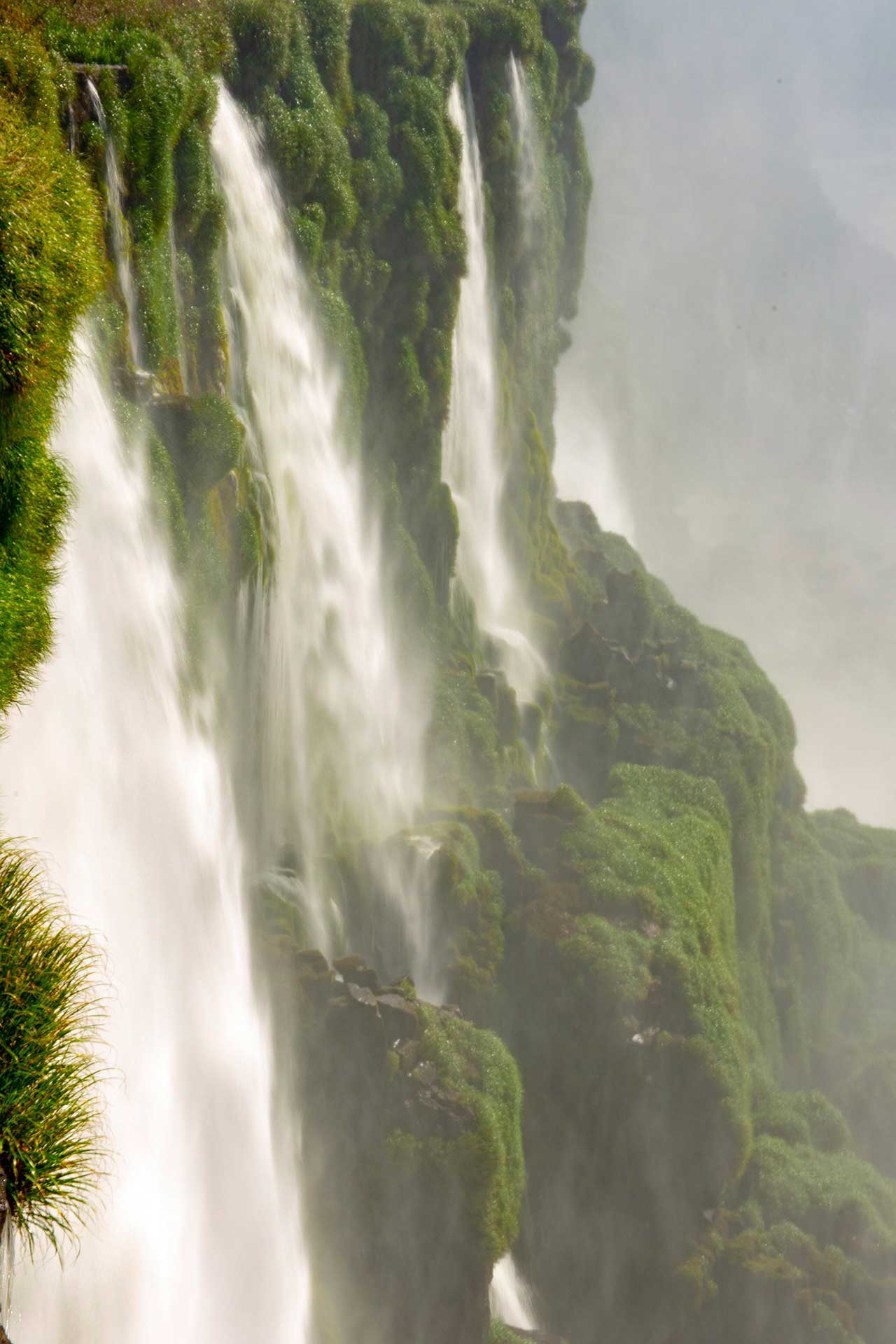
Iguaçu Falls isn’t nature’s only great gift to the area. The Atlantic Rainforest surrounding the Falls is kept lush by the moist air, leaving a rich source of food for a wide variety of creatures. Huge butterflies and tiny hummingbirds shimmer in the sun like the mists above the Falls. Monkeys and sloths move through the trees at different speeds, while anteaters and jaguars have been spotted looking for different creatures to eat.
In complete contrast to all of this is the monumental Itaipú Dam, the world’s largest hydroelectric plant on the Paraná River.
build your clients trip with our experts


WHAT NOT TO MISS
IN IGUAÇU BRAZIL
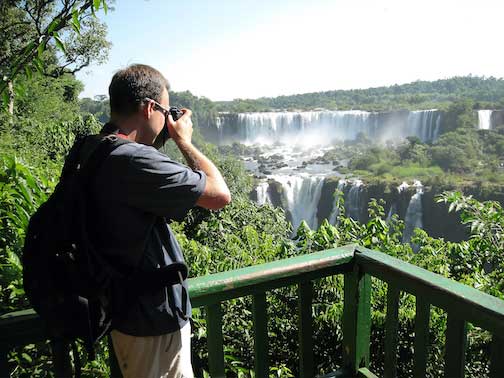
Argentine Falls (Puerto Iguazu)
Puerto Iguazu, Argentina (IGR). Argentina’s side of the falls allow for a more intimate experience to explore the falls in more depth through and around elevated walkways take you to many of the 275 falls, with views from above, alongside and below them. As you wind through the trails and bridges, you come to the undoubted highlight standing on the very edge of the Devil’s throat, peering down into whirling water as it crashes into the Brazilian side of the falls below.
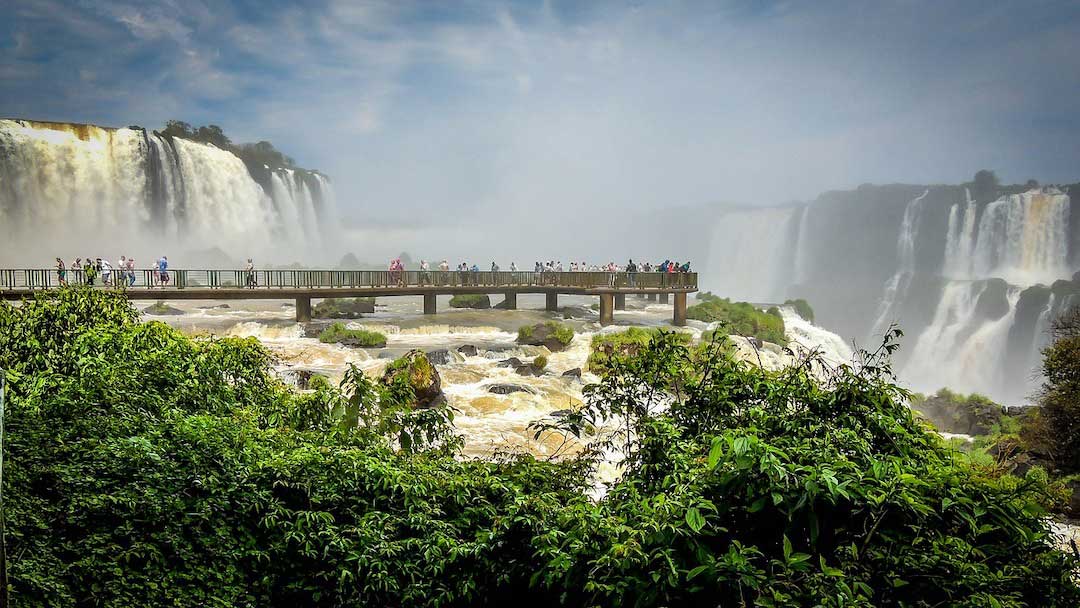
Brazilian Falls (Foz do Iguaçu)
Foz do Iguaçu, Brazil (IGU). On the Brazil side you get a very different perspective of natures sheer force and beauty of mother nature strattling between Argentina, Brazil, and Paraguay. This side of the park has some great jungle adventures to compliment having the opportunity to walk up to, and above into, the Devil’s throat…makes the trip to this side worth it in itself. Consider a helicopter ride or a visit to the bird park while en route to the airport, just make sure to plan ahead.
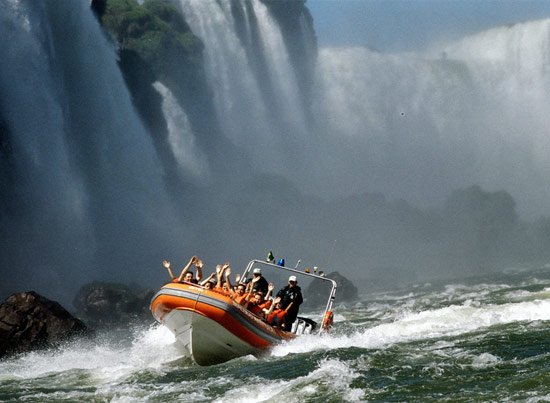
Iguazu Boating Adventure
Both national parks offer exciting boat rides that will get you close (and wet) to, in and around the waterfalls quickly in zodiac’s motorboats. Both tours are equally fun, similar, and exhilerating; although enquire in advance as there are times of year this adventure is not running due to safety in water. Which side to pick really depends on the time available and schedule, we recommend both sides a visit and definitely the boat ride, most important to keep in mind is that you have a hotel room that evening, not a transfer and flight to the airport!
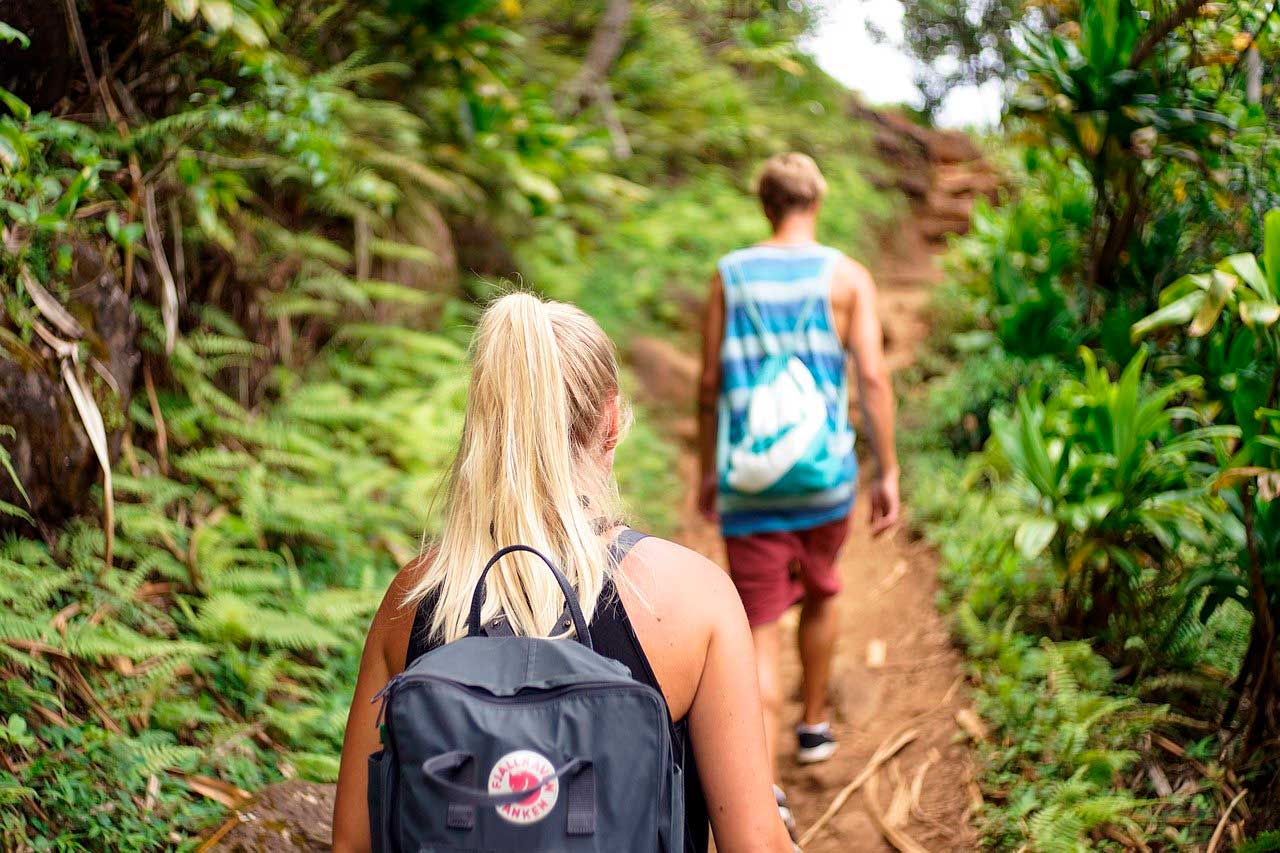
Hiking jungle trails
There are many possibilities to hike the surrounding jungle of Iguazu and highly recommended to do so with a professional guide. There are activities from hikes, boat rides, rappelling, to visiting animal shelters, local communities, and other protected areas nearby, and many trails to be explored in the Brazilian National Park especially.
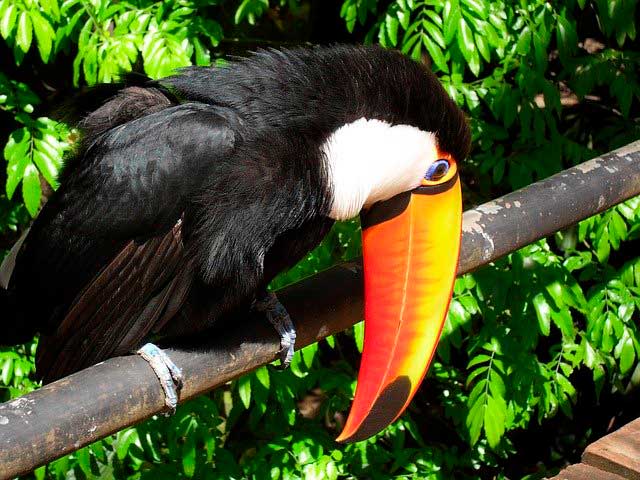
The Bird Park (Parque Das Aves)
Integrated Bird Protection Center for the Atlantic Forest, this park is one of Latin America’s largest, also allowing visitors interaction with many bird species. Their goal, to protect 120 species of these Atlantic Forest birds at some extinction risk. It’s set within the 16 hectares (40 acres) area of sub-tropical rain forest and provides shelter for around a thousand birds (150 species) as well as butterflies and reptiles from both all South America and other exotic places.

Itaipu Hydroelectric Dam
In the 1960’s, Brazil and Paraguay shared their natural resources to support expanding electrical needs of their respective countries, the Paraná River, the seventh largest in the world. A massive project that would harness the river’s energy and turn it into electrical power, while also acting as a natural border between the two nations. Brazil is responsible for 90% of the energy generated by the plant, equivalent to Paraguay’s 11-year, and Argentina’s one year energy consumption.
destination map

| Title | Address | Description |
|---|---|---|
Rio de Janeiro | Río de Janeiro, Estado de Río de Janeiro, Brasil | Rio de Janeiro is truly one of the world’s great cities. It is known to its people, the Cariocas, as the Marvelous City and every visitor to Rio will understand why. Much of that is due to the city’s unbeatable location, nestled between the deep blues of the Atlantic Ocean and Guanabara Bay and the dark greens of the forested mountains, and fringed by stunning golden beaches such as Ipanema and Copacabana.Read more… |
Buzios | Búzios, Estado de Río de Janeiro, Brasil | Búzios is one of the prettiest places in Brazil, and possibly in the world. Any visitor will be able to understand why it is regularly voted amongst the top ten most beautiful places on the planet. The romantic charm of Búzios is not just in the quaint old fishing village with its winding cobblestone streets and picturesque harbor. It occupies part of a small peninsula ringed by 25 beautiful tropical beaches. Read more… |
Paraty | Parati - Estado de Río de Janeiro, 23970-000, Brasil | Paraty is a fabulously picturesque colonial town on one of Brazil’s most beautiful stretches of coastline, the Costa Verde. The town itself, with its colorful old buildings and fishing boats, is dwarfed by the forest-covered mountains behind, which slope down to meet blue waters of the Atlantic Ocean. The rocky coast has many bays and sprinkled with over 60 islands and 100’s of secluded tropical beaches. Read more… |
Iguaçu Falls | Foz do Iguaçu, Estado de Paraná, Brasil | Possibly the most picturesque waterfalls on earth. Unlike other great waterfalls, the majesty of Iguaçu is that the Iguaçu River drops around 328 ft (100m) into 275 separate Falls across its 0.6 mile (1km) width. Many of the Falls would be tourist attractions in their own right, but as a whole, the spectacle is as awe-inspiring as any of nature’s great sights. Read more… |
Manaus & the Amazon | Manaos, Amazonas, Brasil | The idea of visiting the world’s biggest river and the rainforest that surrounds it attracts many adventurous travelers to Brazil. With over half of the world’s largest jungle found in Brazil, it is little wonder that the area’s main city, Manaus, serves as the nexus for most travelers who begin their adventures into Brazil’s lively Amazon Jungle. Read more… |
Southern Pantanal & Bonito | Bonito, MS, 79290-000, Brasil | The world’s largest inland wetland, over half of it lies in Brazil, with Bolivia and Paraguay sharing the remainder. Wildlife viewing here is always spectacular as unobstructed views of large areas of the flooded plains make it possible to spot jaguars, pumas, wolves, deer, anteaters, armadillos, monkeys, around 650 species of bird, and 250 species of fish. Read more… |
Salvador de Bahia | Salvador de Bahía - Bahía, Brasil | Salvador is the heartbeat of Brazil’s African culture with rhythms, dances, clothes, food and beliefs all imported, along with the people, from the continent across the Atlantic Ocean. The majority of Africans were taken to Brazil as slaves to work on sugar and coffee plantations in Salvador, the first capital of Brazil. Read more… |
Lençóis & Chapada Diamantina | Chapada Diamantina, Andaraí - State of Bahia, 46750-000, Brasil | Nature doesn’t get much better than Chapada da Diamantina, and luckily isn’t flooded with tourists. So the only distractions from mountain scenery are natural: orchids and bromeliads; butterflies the size of your hand; monkeys; alligators; deer; and possibly even jaguars can be seen amongst the trees. Read more… |
Depending on your client’s preferences, we can help you determine the best experiences tailored for your clients. From where to visit, when to go, what to do and how to get there safely, our travel experts will help you create an experience your clients will love.
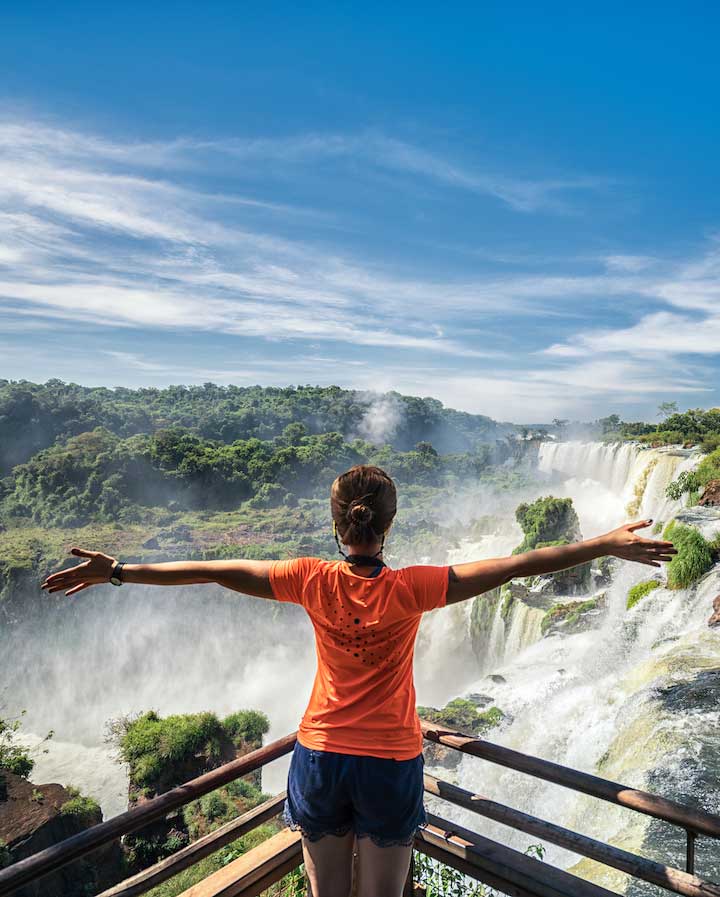
Best times to
visit Iguaçu falls
Rain or shine, summer or winter, Iguaçu Falls will be wet! Iguaçu has a tropical climate and in the summer months, from around December to February, temperatures and humidity are high. In December and January both Argentina and Brazil have their summer holidays, so the Falls can get crowded with visitors and prices will be a little higher. The winter months from June to August see the most rains, and though temperatures are far from cold, the skies can be grey. Though you can get lucky or unlucky at any time of year, the Falls are best seen with a backdrop of blue skies. The best time to visit is often said to be spring and fall, when skies are usually blue and the crowds less dense. Holiday season in Brazil and Argentina runs from December to March, when the Falls will be very busy, especially at weekends. July is also a peak period. To photograph the Falls, the Brazilian side is better in the morning, while the Argentinean side has better light during the late afternoo
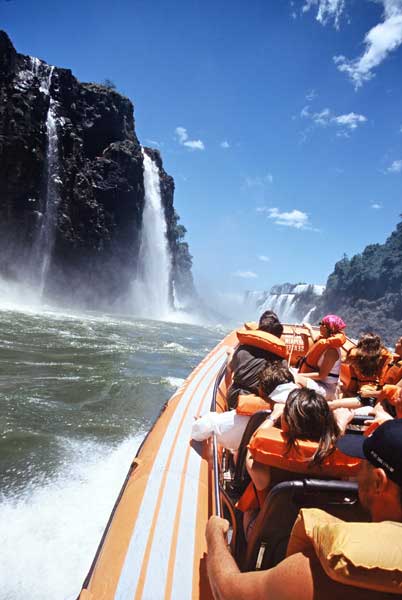
practical information
HOW TO GET THERE
Almost two hour flights link the airport of Foz de Iguaçu on the Brazilian side of the Falls with Rio de Janeiro and São Paulo, which both have many direct scheduled flights from Europe and North America with major international carriers. Flights from all major Brazilian cities arrive at Foz de Iguaçu. It’s also possible to arrive to Iguazu Falls, the Argentina side, in Puerto Iguazu – but careful! For de Iguazu (Airport Code: IGU, Brazil) and Puerto Iguazu (Airport Code: IGR, Argentina) are two different airports, only reached by cities from their respective countries.
GETTING AROUND
To/from the airport:
Private transfers are recommended to/from the airport in Foz do Iguaçu (IGU). There are shared transfers available, but the price difference is minimal and will allow tourists to have more time to rest and or explore the area. As opposed to waiting for other travelers at the airport and making rounds to drop off at respective hotels.
Local Transportation:
Uber operates in Foz do Iguaçu and is best when needing local transportation. Local taxis are also an option; however, Uber has shown excellent service in/around Brazil.
To and from Iguaçu National Park, Brazil
Transportation is included with all our excursions to the Brazilian side of the falls; many times, we couple this service with the tours so our travelers can have a more flexible schedule. For instance, after the excursion having the option to stop at the Bird Park or possibly hop on a quick/lengthy helicopter ride over the falls before heading to the airport to fly onward to their next destination in Brazil.
WHERE TO STAY IN PUERTO IGUAZU
Iguaçu Falls is one of the world’s great tourist attractions, and as such the area has everything that tourists from all over the world may require. From cheap accommodation to a world-class hotel with a priceless view of the Falls on the Argentinean side; all budgets are catered for. Restaurants at Iguaçu Falls are accustomed to the tastes of international visitors and serve a wide selection of Brazilian and international cuisine.
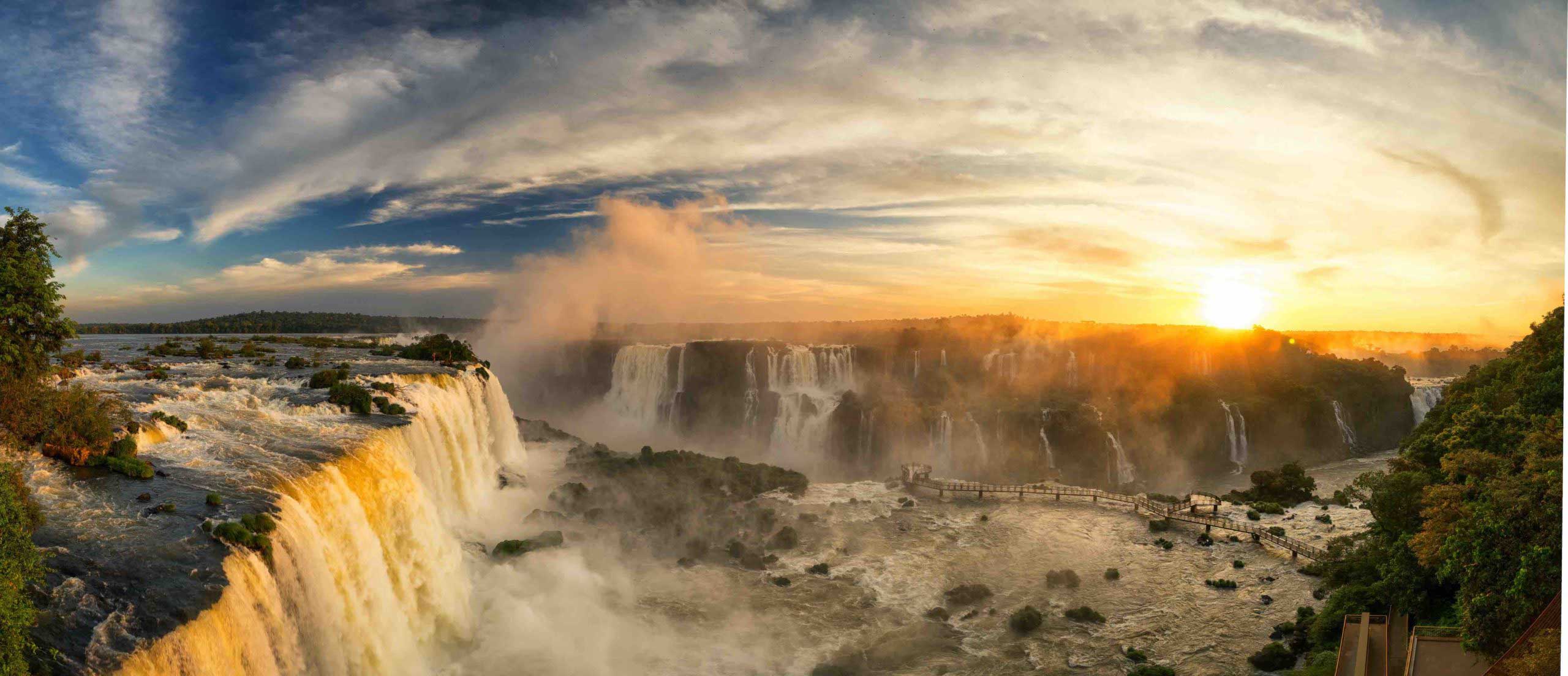
More highlights of Brazil
With eight local offices in Latin America, we have the perfect base to help you build the perfect trip for your clients. Unrivaled experience with a wide selection of bed & breakfasts, small posadas, unique boutique hotels and world class luxurious lodging.
